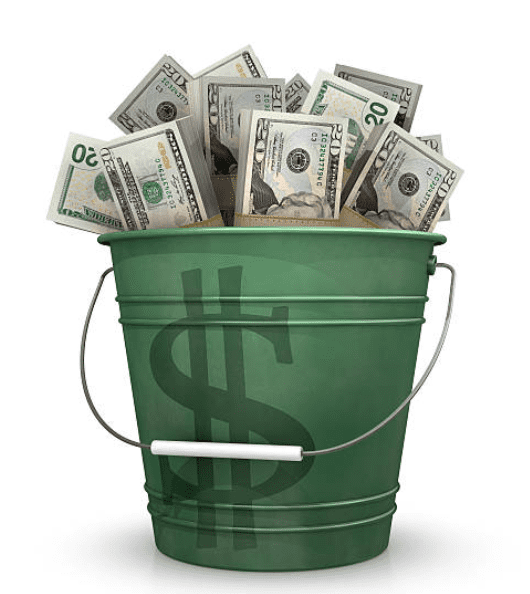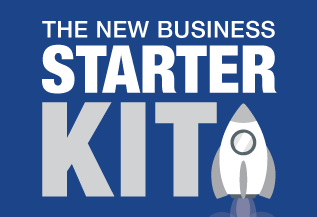How Can a 'Bucket' Company Reduce my Tax?

So what is a 'bucket' company and how can it help me reduce my tax? It is simply a company that you distribute income to from your
Family Trust.
How does this work in practice? You run your business via a Trust. The Trust makes a profit and then distributes this
as income to the family beneficiaries. This is mum, dad and the children. This is to use up their low marginal tax rates. When there
is no one left on low marginal tax rates then the trust then distributes the balance of the income to the ‘bucket’ company. The
‘bucket’ company then pays a flat rate of tax currently 25% for the 2022 financial year. For example: Let's
say , mum and dad run their business in a trust structure. They have an adult child, one minor and have set up
a 'bucket' company.
Their structure would look like this;

Suppose the income from the Trust to be distributed is $500,000. We distribute $45,000 each to dad, mum, and the adult child
(thus leaving their top income in the 19% bracket) and give $416 to the minor. The remaining $364,584 is distributed to the
'bucket' company and get's taxed at a flat rate currently 25% for 2022.
The distributions can be summarised as follows:
| Mum | $ 45,000 |
| Dad |
45,000 |
| Child (Adult) |
45,000 |
| Child (Minor) | 416 |
| Bucket Company |
364,584 |
| Total Distribution | $ 500,000 |
The tax payable by each beneficiary based on tax rates for 2022, would be:
| Mum |
$ 5,992 |
| Dad |
5,992 |
| Child 1 |
5,992 |
| Child 2 |
Tax Free |
| Bucket Company at 25% |
91,146 |
|
TOTAL TAX PAID Average tax rate = 22% |
$109,122 |
If the Trust was set up without a 'bucket' company and all income was distributed equally to the family adult
beneficiaries, the tax payable would be $150,198. This means that by using a 'bucket' company you would receive a TAX
SAVING
of 27% or $41,076 in tax. If you did this every year, the accumulated tax savings would be significant. Once the
‘bucket’ company pays it's tax, the balance of funds can be invested to maximise the returns for the shareholders. But,
like any strategy, while their are advantages, you must also consider the challenges.
WHAT YOU NEEED TO KNOW ABOUT A 'BUCKET' COMPANY
#1: The Trust Must Physically Transfer the Money into the Bucket Company’s Bank Account

If you decide to distribute Trust income to a ‘bucket’ company, you must physically transfer the money into the ‘bucket’ company’s bank
account before lodging its tax return. So the first challenge is having this money available without adversely affecting your cash
flow. If you cannot do this, you will need to establish a Division 7A loan between the Trust that is distributing the income and the
‘bucket’ company that has not received the payment. A Division 7A loan has a maximum term of 7 years,
has a minimum annual repayment plan and has interest payable at a rate set by the ATO each financial year.
#2: Getting Money Out of the 'Bucket' Company
You cannot just take money out of a company because it belongs to the ‘bucket’ company. If you want to take money out, you can pay a dividend to the shareholders of the bucket company. Because this dividend has already been taxed at the company tax rate, the shareholders receive a (franking) credit on the tax already paid. In practical terms, if the ‘bucket’ company paid tax on the income at 25%, then the imputation or franking credit is 25%.
If the company declares a dividend to mum and dad and their tax rate is 47%, because the ‘bucket’ company has already paid 25%, the mum and dad will only pay the difference in tax of 22%.
If, however, mum and dad are retired and their income is low, they can, over time, drip-feed dividends into their names. This means they could potentially receive a refund from the ATO on imputation credits paid on dividends they received from the 'bucket' company.
#3: What do You do with the Money in the 'Bucket' Company?
 Once you have distributed money to a ‘bucket’ company, the cash from the Trust is now in the bucket company and needs to be invested. The
‘bucket’ company is now positioned to invest and generate an income source for the shareholders. However, a company may not be
the best vehicle to hold ‘appreciating’ assets. This is because while it may only pay a tax rate of 25%, it does not receive the 50%
Capital Gains Discount if it decides to sell an asset that is available to individuals and Trusts when they hold that asset for over 12
months.
Once you have distributed money to a ‘bucket’ company, the cash from the Trust is now in the bucket company and needs to be invested. The
‘bucket’ company is now positioned to invest and generate an income source for the shareholders. However, a company may not be
the best vehicle to hold ‘appreciating’ assets. This is because while it may only pay a tax rate of 25%, it does not receive the 50%
Capital Gains Discount if it decides to sell an asset that is available to individuals and Trusts when they hold that asset for over 12
months.
A ‘bucket’ company can invest the money any way it wants. E.g. It can own and operate a business and hold property and passive investments like shares. Because it will be building up its assets, the ‘bucket’ company should limit its risk by investing in passive investments and not running a business. This is because running a business may pose a threat to the accumulated assets inside the "bucket' company.
As you can see, this strategy, has it's advantages, but also has strict ATO rules you must follow. So before you decide if it's for
you, we invite you to book a free, one-hour introductory consultation to discuss your situation. To book a
time, contact us today or complete your details in the box at the top of this page.
Disclaimer: This article contains general information only and no responsibility can be accepted for errors, omissions or possible misleading statements. It is not designed to be a substitute for professional advice and does not take into account your individual circumstances. Therefore, no responsibility can be accepted for any action taken as a result of any information contained in this article.














